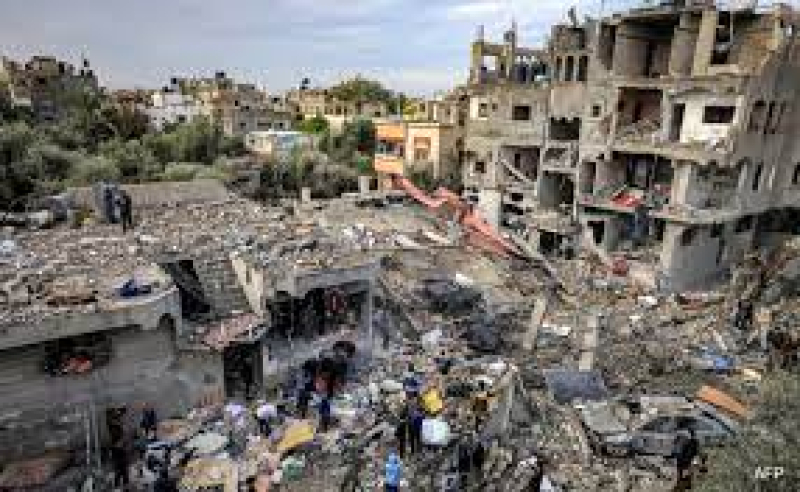- UN Calls for Calm in Bangladesh After Protest Leader’s Killing |
- DMP issues 7 traffic directives for Osman Hadi’s Janaza |
- Vested quarter fuelling chaos to impose new fascism: Fakhrul |
- Hadi’s namaz-e-janaza at 2:30pm Saturday |
- Jashore’s Gadkhali blooms with hope; flowers may fetch Tk4 bn |
At least half of Gaza's buildings damaged or destroyed: BBC

Destructions in Gaza in the present war. Photo - AP
More than half of Gaza's buildings have been damaged or destroyed since Israel launched its retaliation for the Hamas attacks of 7 October, new analysis seen by the BBC reveals.
Detailed before-and-after imagery also shows how the bombardment of southern and central Gaza has intensified since the start of December, with the city of Khan Younis bearing much of the brunt of Israel's military action.
Israel has repeatedly told Gazans to move south for their own safety.
Across Gaza, residential areas have been left ruined, previously busy shopping streets reduced to rubble, universities destroyed and farmlands churned up, with tent cities springing up on the southern border to house many thousands of people left homeless.
About 1.7 million people - more than 80% of Gaza's population - are displaced, with nearly half crammed in the far southern end of the strip, according to the United Nations.
Further analysis, by BBC Verify, reveals the scale of destruction of farmland, identifying multiple areas of extensive damage.
The Israel Defense Forces (IDF) has said it is targeting both Hamas fighters and "terror infrastructure", when challenged over the scale of damage.
Now, satellite data analysis obtained by the BBC shows the true extent of the destruction. The analysis suggests between 144,000 and 175,000 buildings across the whole Gaza Strip have been damaged or destroyed. That's between 50% and 61% of Gaza's buildings.
The analysis, carried out by Corey Scher of City University of New York and Jamon Van Den Hoek of Oregon State University, compares images to reveal sudden changes in the height or structure of buildings which indicate damage. - BBC News

